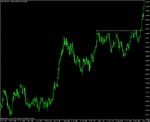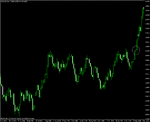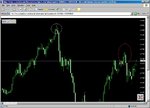trader_dante
Veteren member
- Messages
- 4,535
- Likes
- 1,704
Something that made a big impact on me
For every trader there are points along the journey to consistent profitability when something clicks.
You may see something, read something, overhear something else.
These points come to different traders at different times but I think we've all experienced them.
I had one when I read the following passage, early in my trading career. It had a big effect on me when I read it and I have never forgotten it. I think it has shaped me in an important way and still effects how I think about the markets.
Grab a coffee and have a read. If you've read it before, remind yourself once again what an incredible trade this was:
++++++++++++++++++++++++++
Excerpt from an interview with Randy McKay from The New Market Wizards (Jack D. Schwager).
Did you continue to meet success after your intial year? Were there any pivotal trades in those first years?
The trade that was a turning point for me was the one that took me from being a twenty-to-forty-lot trader to trading hundreds of contracts.
In 1976, the British government announced that they weren't going to allow the pound to trade above $1.72. They were concerned that the pound's strength would lead to increased imports. At the time, the pound was trading in the mid-160s. To my surprise, the market responded to the annoucement by immediately going to $1.72. The pound then fell back to $1.68 and rebounded again up to $1.72. Every time it reached $1.72, it fell back, but by smaller and smaller amounts each time. The price range steadily converged until the pound was trading narrowly just beneath the $1.72 level.
Most of the people I knew said, "They're not going to let it go above $1.72. We might as well sell it. It's a no risk trade." I saw it differently. To me, the market looked like it was locked limit-up.
I felt that if the government announced that they weren't going to let the price go above a certain level and the market didn't break, it indicated that there must be tremendous underlying demand. I thought to myself, "This could be the opportunity of a lifetime." Up to that point in time, the largest position I had ever taken was thirty or forty contracts. I went long two hundred British pound contracts.
Although intellectually I was convinced that I was right, I was scared to death because the position was so much larger than what I had been trading. In those days, there was no Reuters or similar service providing cash market quotes in the currencies. I was so nervous about my position that I woke up at five o' clock each morning and called the Bank of England to get a quote. I would mutter something about being a trader from CitiBank or Harris Trust and needing a quote quickly. I would normally talk to some clerk who thought I was a big shot, and he would normally give me the quotes.
One morning, I made the call from my kitchen, and when I asked the clerk for the quote, he answered: "The pound is at $1.7250."
I said, "What! You mean $1.7150, don't you?"
"No," he replied. "It's $1.7250."
I realised that was it. By that time, I had gotten my brother and a number of friends into the trade, and I was so excited that I called all of them with the news. I was so confident that I even bought more contracts for myself. I then just sat back and watched the market ride all the way up to the $1.90 level.
++++++++++++++++++++++++++
As I said, when I read this passage, it had a big impact on me.
But I think that what I took away from it was not the obvious message.
The obvious message from that passage is:
If the market reacts bullishly to bearish news then there is something wrong.
This is a very valid point and many, many traders use it in their trading.
But I got something very different from this passage. I felt the important message to be taken from this was:
If you get a sign that the market wants to see a level, usually it will and the single most important thing you can do is be properly positioned to take the maximum advantage of it.
This came back to me this time last year when I was watching the pound rising to the $1.9100 area.
If you will look at the chart you will it tried this five times and everytime it did, it fell back.
Infact, on the last attempt you will see on that chart, where it had held for a little longer than usual, I went gone long and I was so sure that we were going to see $2 that I held the position even when it turned against me.
I held and held, moving my stop back each day and almost as soon as the loss got so large that I was forced out of the position because I could no longer hold it with the funds in my account, the market turned and went straight back up to $1.9150 or thereabouts.
For every trader there are points along the journey to consistent profitability when something clicks.
You may see something, read something, overhear something else.
These points come to different traders at different times but I think we've all experienced them.
I had one when I read the following passage, early in my trading career. It had a big effect on me when I read it and I have never forgotten it. I think it has shaped me in an important way and still effects how I think about the markets.
Grab a coffee and have a read. If you've read it before, remind yourself once again what an incredible trade this was:
++++++++++++++++++++++++++
Excerpt from an interview with Randy McKay from The New Market Wizards (Jack D. Schwager).
Did you continue to meet success after your intial year? Were there any pivotal trades in those first years?
The trade that was a turning point for me was the one that took me from being a twenty-to-forty-lot trader to trading hundreds of contracts.
In 1976, the British government announced that they weren't going to allow the pound to trade above $1.72. They were concerned that the pound's strength would lead to increased imports. At the time, the pound was trading in the mid-160s. To my surprise, the market responded to the annoucement by immediately going to $1.72. The pound then fell back to $1.68 and rebounded again up to $1.72. Every time it reached $1.72, it fell back, but by smaller and smaller amounts each time. The price range steadily converged until the pound was trading narrowly just beneath the $1.72 level.
Most of the people I knew said, "They're not going to let it go above $1.72. We might as well sell it. It's a no risk trade." I saw it differently. To me, the market looked like it was locked limit-up.
I felt that if the government announced that they weren't going to let the price go above a certain level and the market didn't break, it indicated that there must be tremendous underlying demand. I thought to myself, "This could be the opportunity of a lifetime." Up to that point in time, the largest position I had ever taken was thirty or forty contracts. I went long two hundred British pound contracts.
Although intellectually I was convinced that I was right, I was scared to death because the position was so much larger than what I had been trading. In those days, there was no Reuters or similar service providing cash market quotes in the currencies. I was so nervous about my position that I woke up at five o' clock each morning and called the Bank of England to get a quote. I would mutter something about being a trader from CitiBank or Harris Trust and needing a quote quickly. I would normally talk to some clerk who thought I was a big shot, and he would normally give me the quotes.
One morning, I made the call from my kitchen, and when I asked the clerk for the quote, he answered: "The pound is at $1.7250."
I said, "What! You mean $1.7150, don't you?"
"No," he replied. "It's $1.7250."
I realised that was it. By that time, I had gotten my brother and a number of friends into the trade, and I was so excited that I called all of them with the news. I was so confident that I even bought more contracts for myself. I then just sat back and watched the market ride all the way up to the $1.90 level.
++++++++++++++++++++++++++
As I said, when I read this passage, it had a big impact on me.
But I think that what I took away from it was not the obvious message.
The obvious message from that passage is:
If the market reacts bullishly to bearish news then there is something wrong.
This is a very valid point and many, many traders use it in their trading.
But I got something very different from this passage. I felt the important message to be taken from this was:
If you get a sign that the market wants to see a level, usually it will and the single most important thing you can do is be properly positioned to take the maximum advantage of it.
This came back to me this time last year when I was watching the pound rising to the $1.9100 area.
If you will look at the chart you will it tried this five times and everytime it did, it fell back.
Infact, on the last attempt you will see on that chart, where it had held for a little longer than usual, I went gone long and I was so sure that we were going to see $2 that I held the position even when it turned against me.
I held and held, moving my stop back each day and almost as soon as the loss got so large that I was forced out of the position because I could no longer hold it with the funds in my account, the market turned and went straight back up to $1.9150 or thereabouts.
Attachments
Last edited:




